‘It’s so surreal’: How London Fashion Week’s new faces are ruling the roost
As the autumn/winter 2022 shows get underway, Olivia Petter takes a closer look at the emerging talents setting the sartorial agenda


Your support helps us to tell the story
From reproductive rights to climate change to Big Tech, The Independent is on the ground when the story is developing. Whether it's investigating the financials of Elon Musk's pro-Trump PAC or producing our latest documentary, 'The A Word', which shines a light on the American women fighting for reproductive rights, we know how important it is to parse out the facts from the messaging.
At such a critical moment in US history, we need reporters on the ground. Your donation allows us to keep sending journalists to speak to both sides of the story.
The Independent is trusted by Americans across the entire political spectrum. And unlike many other quality news outlets, we choose not to lock Americans out of our reporting and analysis with paywalls. We believe quality journalism should be available to everyone, paid for by those who can afford it.
Your support makes all the difference.When it comes to celebrating fresh talent, London Fashion Week has form.
Unlike its counterparts in New York, Milan and Paris, which are all about established brands, LFW is renowned for embracing emerging designers with open arms.
This is largely thanks to the British Fashion Council’s Newgen initiative, which offers financial support and mentoring opportunities to new designers while also giving them a LFW slot at its dedicated showspace, which, this year, is located at the Old Selfridges Hotel near Bond Street.
Previous recipients (Molly Goddard, JW Anderson and Simone Rocha) have gone on to become highlights on the LFW schedule.
Despite the fact that Newgen itself is nothing revolutionary – the programme has been running since 1996 – there has been a significant shift in terms of where its designers sit on the lineup.
While in previous years, they might have served as a sprightly side dish in a schedule headlined by heritage brands (think Burberry and Christopher Kane), Newgen’s emerging talents are slowly becoming the main event.
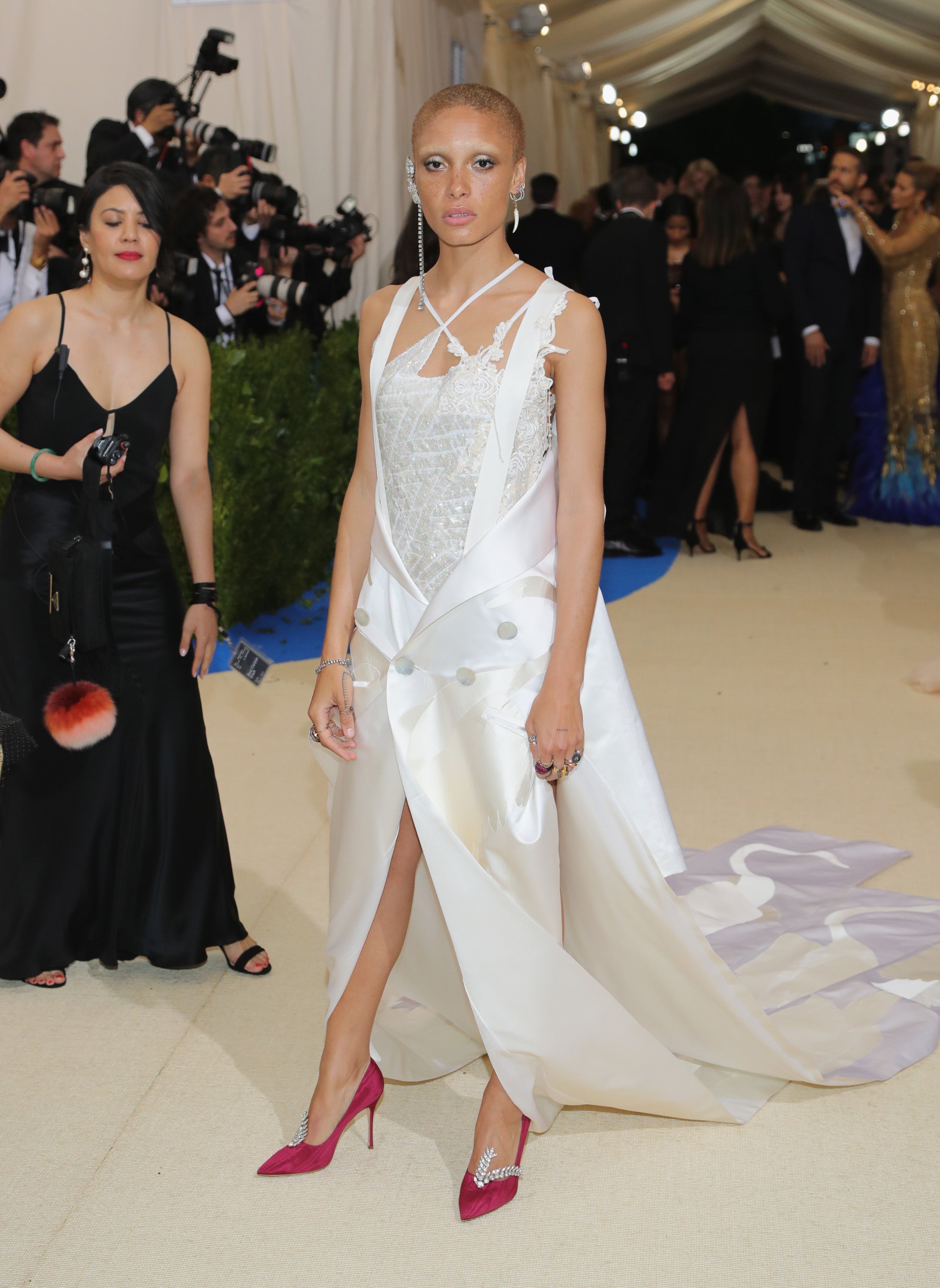
Last season, for example, all eyes were on Newgen recipient Nensi Dojaka. The Albanian designer made her solo debut at LFW shortly after it was announced she had won the prestigious LVMH prize for young designers for her slinky, lingerie-inspired designs, loved by the likes of Dua Lipa, Zendaya and Bella Hadid.
Despite sitting amongst some of British Fashion’s biggest names on the schedule, Dojaka was who the style set couldn’t stop fawning over, with American Vogue dubbing her “one of the freshest forces in womenswear for a long time to emerge from London, or perhaps internationally”.
This time around, there are a handful of new faces on the LFW lineup creating a similar buzz. Take Conner Ives, the 25-year-old Central Saint Martins graduate, who was among the Newgen recipients for 2021/2022.
It’s the first time the Bedford-born New Yorker is showing at LFW, despite having made his mark on the industry all the way back in 2017 when Adwoa Aboah wore one of his dresses to the Met Gala.
Ives was in his first year at CSM when he got the call up, with Aboah commissioning an iteration of one of his student creations: a show-stopping deconstructed tuxedo with a four-foot train embellished with swans.
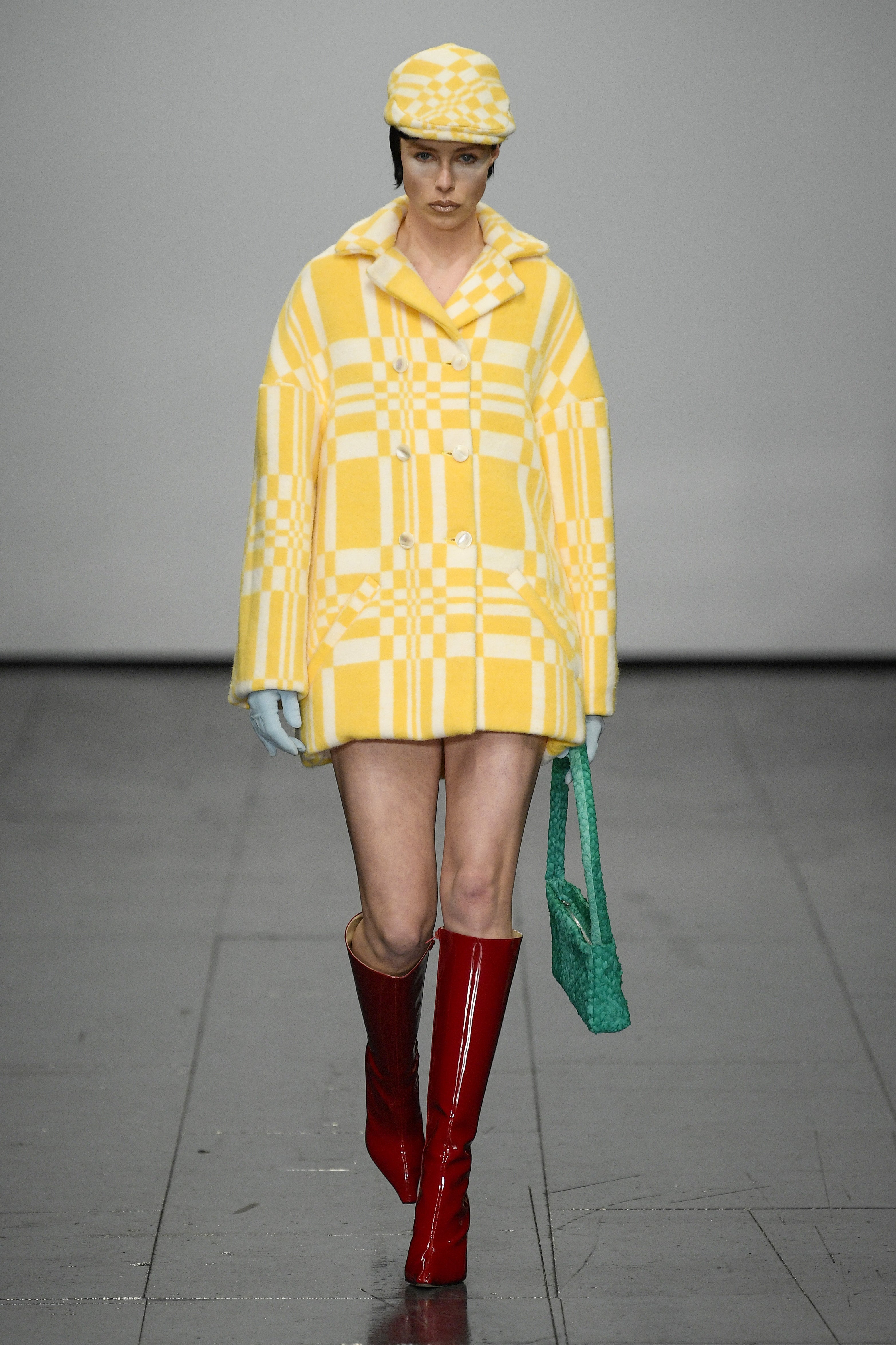
From there, Ives was in high-demand, going on to work for none other than Rihanna at her LVMH-owned brand, Fenty, for a year-long placement.
Now, having graduated in 2020 (with a collection hailed by American Vogue, no less), Ives has finally made his way onto the official LFW schedule, with a show titled Hudson River School, which draws on the Mid-19th Century art movement that began in Ives’ hometown of Hudson Valley, New York.
Every look has been named after an iconic character, archetypes and pop culture figures Ives was inspired by as a teenager.
They include ‘The Vogue Girl’, which takes its cues from Anne Hathaway’s portrayal of Andrea Sacks in The Devil Wears Prada. There’s also ‘The Cool Girl’, a reimagining of Gillian Flynn’s famous trope as depicted in her bestselling novel, Gone Girl. However, none of these ensembles are quite what you’d expect.
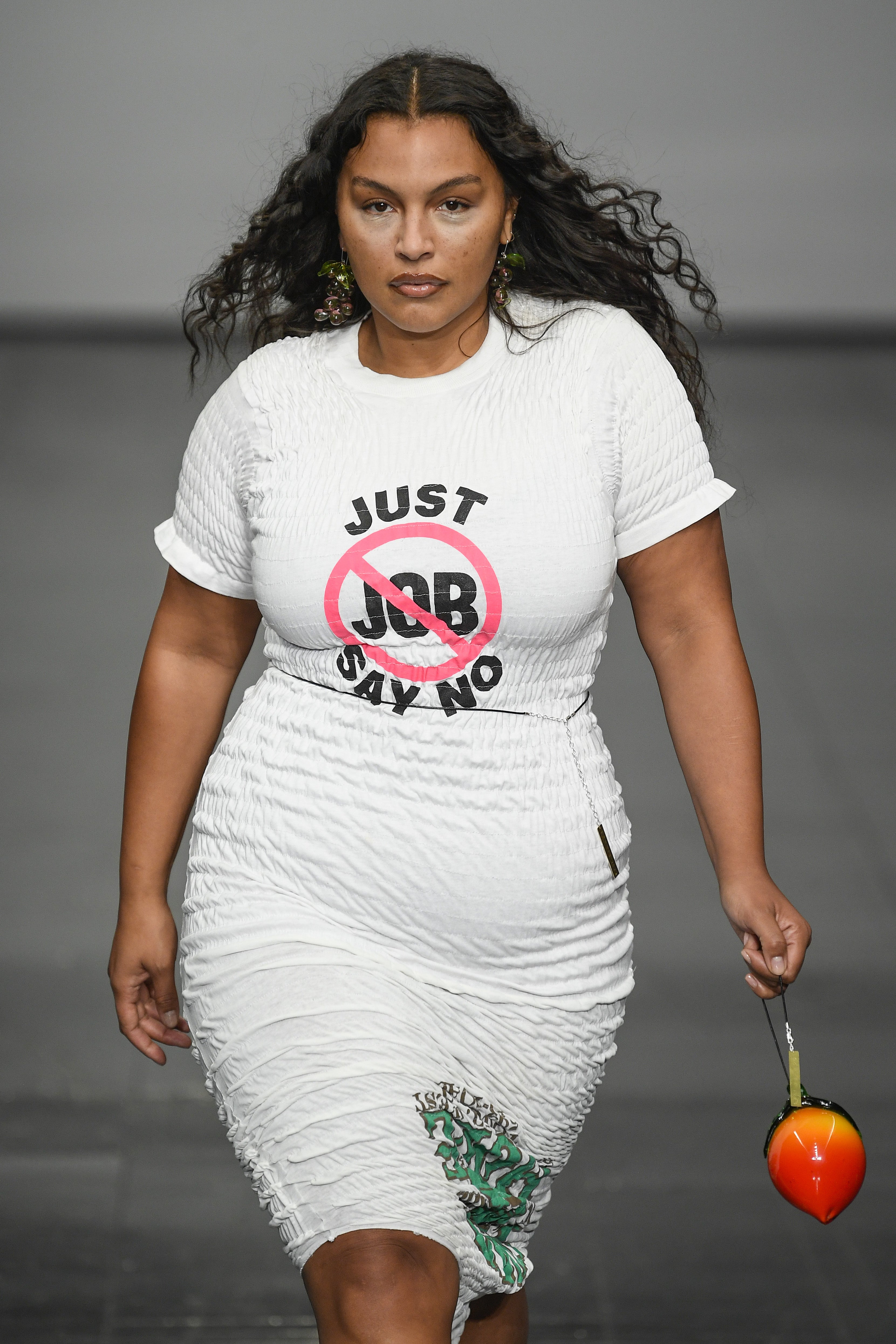
Take the “Vogue Girl” look, modelled by none other than Edie Campbell, which saw the British fashion star walk the runway in a yellow checked coat with a matching Baker Boy hat and a pair of bright red knee-high boots.
Each element is easily identifiable as taken from Hathaway’s character – “are those the Chanel boots?” rings a bell – but seeing them thrown together in this unexpected ensemble is testament to Ives’ creativity. It’s this theme that underpins the entire collection.
Even niche characters are made accessible, like “The Carmen Miranda Raver Girl”, described in the show notes as “the girl you meet between sweaty breaths on the dance floor of your summer rave” and “The Laurel Canyon girl” aka “a 60s-era hitch-hiker”.
Of course, there are trend-driven pieces – think coordinating patterned tops worn only with knickers and low-rise jeans with frayed edges – but Ives’ skill lies in his ability to make even these items seem like they could be worn by the everyday person.
Despite the eclectic mix of characters, Ives manages to find a sense of cohesion in his collection, with many nods to the 1970s (think tasseled tops, bandanas and denim midi skirts).
But what really made the collection shine (aside from the fact that 75 per cent of it was sourced from deadstock or vintage fabrics) was Ives’ own playfulness in his archetypes, which often poke fun at the very industry within which he operates - see ‘the editor’ inspired by Anna Wintour and ‘the gap year girl’, defined as ‘the girl who goes to Bali after graduating’ who may or may not return with beads in her hair.
This spirit reflected in various quirks in his collection, like mismatched knee-high boots and slogan dresses – plus-size model Paloma Elsesser walked the runway in a white ruched T-shirt dress with the words “just say no” splashed across it.
Speaking to The Independent backstage after the show, Ives describes his debut as “so surreal” and admits he spent most of it crying his eyes out. “This has been a fantasy since I was five years old,” he adds.
“I wanted each look to become a character. When I was growing up, I was always so seduced by Galliano shows because they were performances. The models would stay on the runway for almost a minute.”
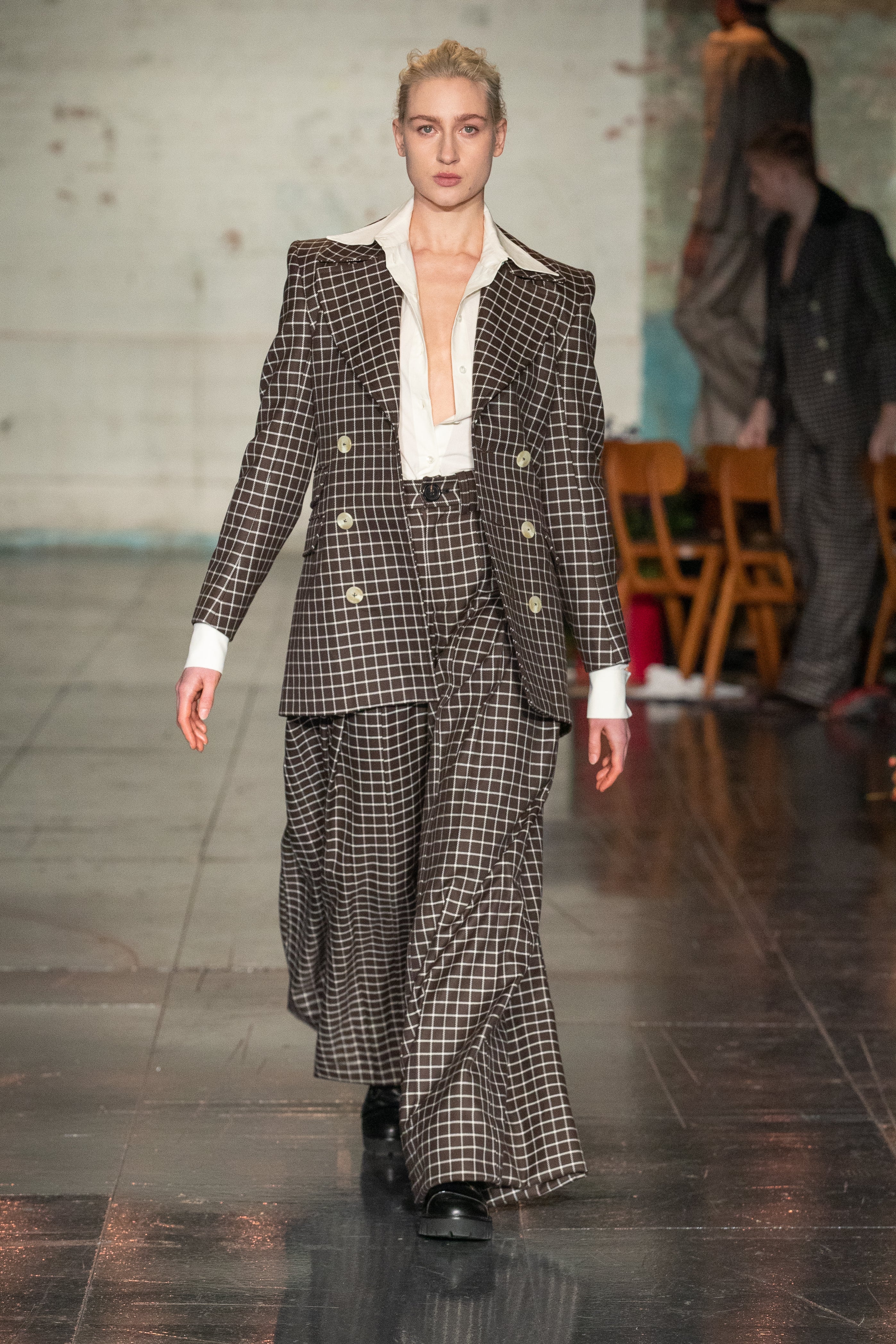
Indeed, with a thumping soundtrack incorporating remixes of early Noughties R&B tracks (including 50 Cent’s “Candy Shop”), this playful aspect was immediately apparent. It’s no wonder Ives received rapturous applause at the end of the show.
Another new name to note this season is SS Daley, real name Steven Stokey-Daley, who has just been named a semi-finalist in LVMH’s prize for young designers. His “explosive” debut at LFW last season took the form of a play, performed by the National Youth Theatre.
Rather than simply sending clothes down the runway, the politically driven Liverpudlian, who graduated from Westminster University in 2020, presented the style set with a three-act meditation on class, masculinity, and sexuality.
Inspired by the tensions and violence in British boys’ public schools, Stokey-Daley’s show examined what it means to be male today, tapping into his own fascination with Britain’s elite and how it related to his own experiences as a gay, working-class man.
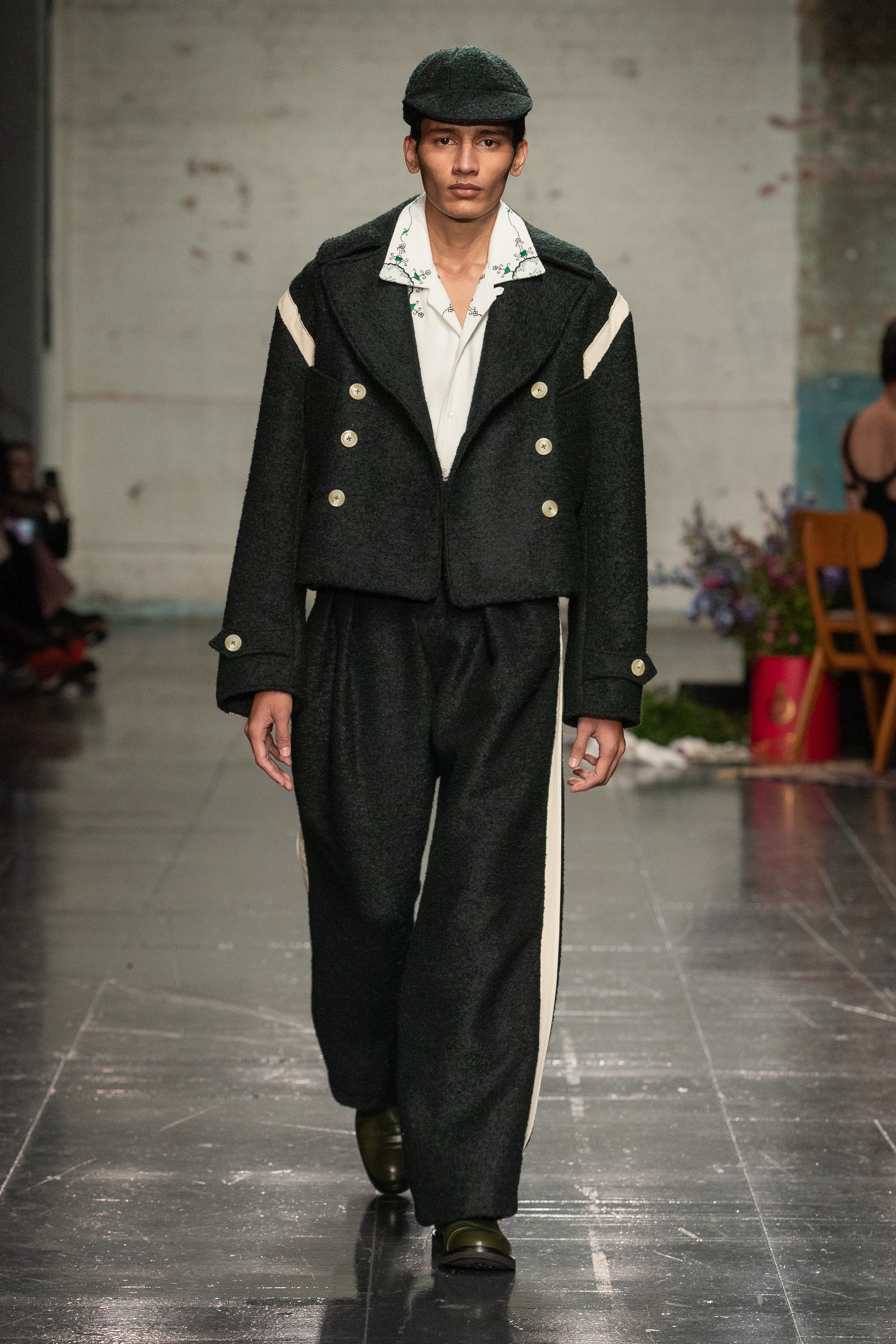
Launched in lockdown in 2020, Stokey-Daley’s brand has skyrocketed in popularity in record time, with his innovative menswear designs already finding their way into the limelight thanks to stylist extraordinaire Harry Lambert, who called in some of his clothes for none than Harry Styles.
The singer wore a pair of Daley’s wide-leg trousers and a white shirt for the music video for his song, “Golden”.
This season, Stokey-Daley once again championed his love of theatre, presenting the Frow with a performance choreographed by Leo Meredith.
With dancers in the place of models, the show comprised a display of various set pieces that saw various mise-en-scène taking place on either side of the runway, which featured a grand dining table on one side and a chaise lounge on the other.
The theme was the dissolution of the stately home and, as the show notes put it, “breaking the constrictions of a codified world and the repressions of those trapped within its privileges”.
This manifested in a two-part performance, with the first representing the interior of the stately home before bringing us outside in the second. The transition was reflected in the clothing, which, for the first time for Daley, comprised both menswear and womenswear.
Initially, we saw luxe pieces including a leather waistcoat cut from diamonds of surplus leather, paired with just some briefs, and jersey vests with cut-outs at the back.
At London Fashion Week you’ve got this incredible opportunity where you have people in a room with lights and set and sound and stage, so why not utilise that for something a bit more interesting and push the boundaries of what it means to have a fashion show?
As Stokey-Daley’s narrative progressed, so did the clothing, with elegant shirting with oversized collars, cropped cable-knit cardigans, and striped shirting. Renowned for his tailoring, Stokey-Daley served up some excellent options this season.
For women, there were iterations of his wide-leg trouser suits in brown and black check while we also saw a corduroy version in a deep merlot shade. For men, there was a single-breasted checked suit and a military-style two-piece featuring nautical stripe detail down the sides.
Speaking to The Independent backstage about what draws him to theatrical fashion shows, Stokey-Daley explained: “It’s about telling a story and at London Fashion Week you’ve got this incredible opportunity where you have people in a room with lights and set and sound and stage, so why not utilise that for something a bit more interesting and push the boundaries of what it means to have a fashion show?”
Underlying all of this, though, is Stokey-Daley’s commitment to sustainability. The designer makes the majority of his clothing using offcut fabrics. “We were really lucky this season that we were able to have a lot of pieces sourced from deadstock materials,” he said.
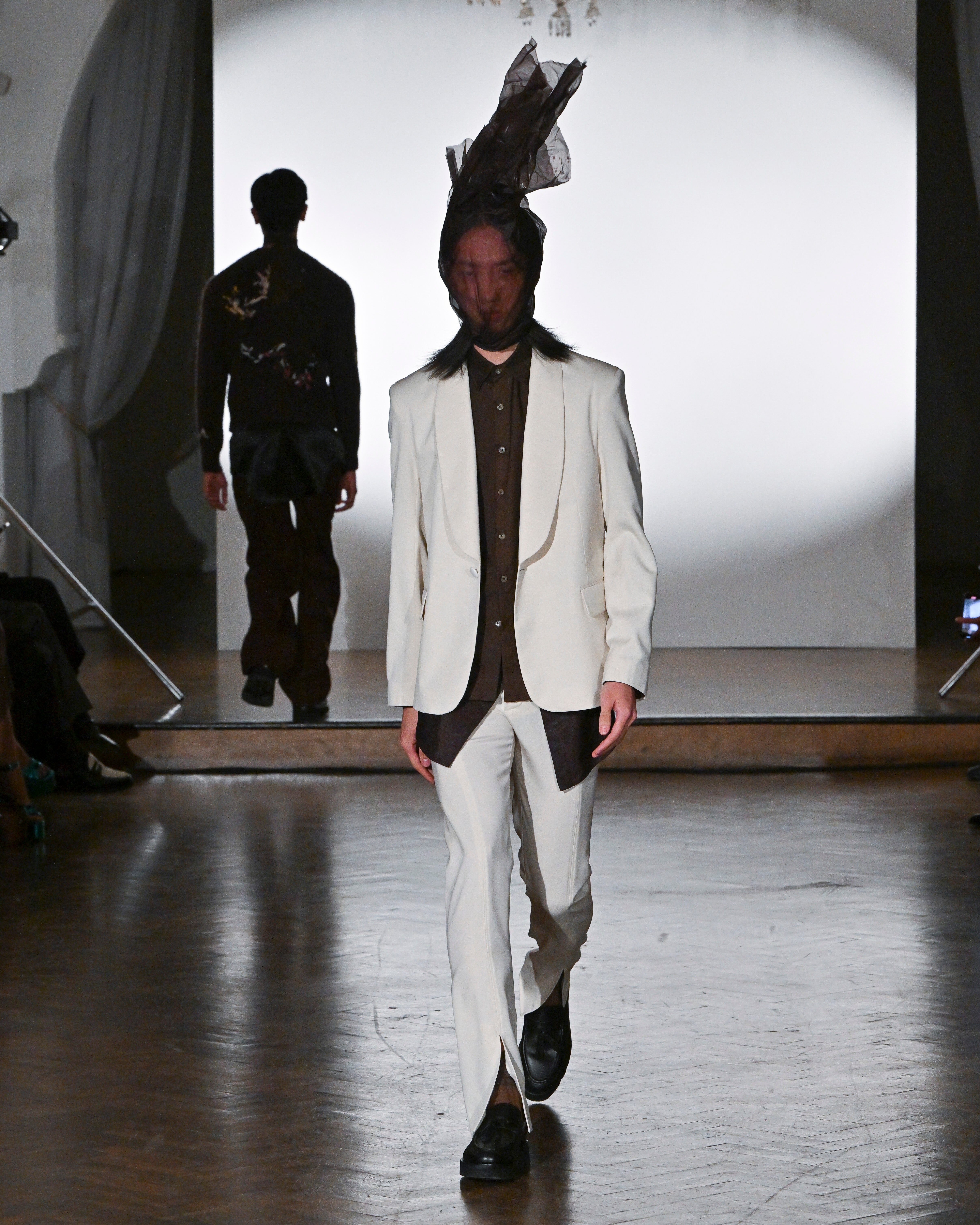
Another Styles-approved designer breathing new air into the industry this season is Daniel W Fletcher, the designer who, despite launching his menswear brand in 2015, only started showing at LFW this time last year when he released his first womenswear pieces – he had previously shown at London Fashion Week Men’s.
After showing his graduate collection, Fletcher, who also attended Central Saint Martins, met Lambert, who suggested that Styles might like some of his shirts. One week later, the musician became his first customer, even wearing one of his designs on the Jonathan Ross Show.
From the north west of England, Fletcher, who was recently named artistic director at iconic Italian label, Fiorucci, has established himself as a socially conscious and vibrant designer with a focus on what he calls “casual luxury”.
This season, the gender-fluid collection, titled “Before The Morning Comes”, was shown in the heart of Marylebone following a cocktail party – an all-too-rare event at LFW. Guests including Nicola Roberts, Jack Guinness and Henry Holland mingled and unwound from the day while sipping on espresso martinis before taking their seats for the evening show.
London has always lead the way in terms of pushing through what’s next
What came next was an explosion of joy, nostalgia, and a touching tribute to Fletcher’s late father, Pete, who passed away at the end of 2021. This manifested in numerous sartorial tributes to the 1970s, specifically its music and that of The Rolling Stones, the first band Fletcher ever saw live with his father as a child.
Tailoring featured prominently in the collection, with navy pinstripes and cream moire silk cuts, as did oversized, big-button coats in satin and grosgrain. There were nods to uniform, too, including a brown military-style two-piece, and striped shirts worn underneath blazers.
Elsewhere, we saw sportswear-inspired looks by way of grass-stained rugby jerseys and brogues worn with calf-high socks.
More specifically, though were the red and white striped knitted scarves (made by none other than Fletcher’s friend and diver-turned-craft aficionado, Tom Daley) and sleeveless tops – both of which paid tribute to the colours of Manchester United, which was Fletcher’s father’s team.
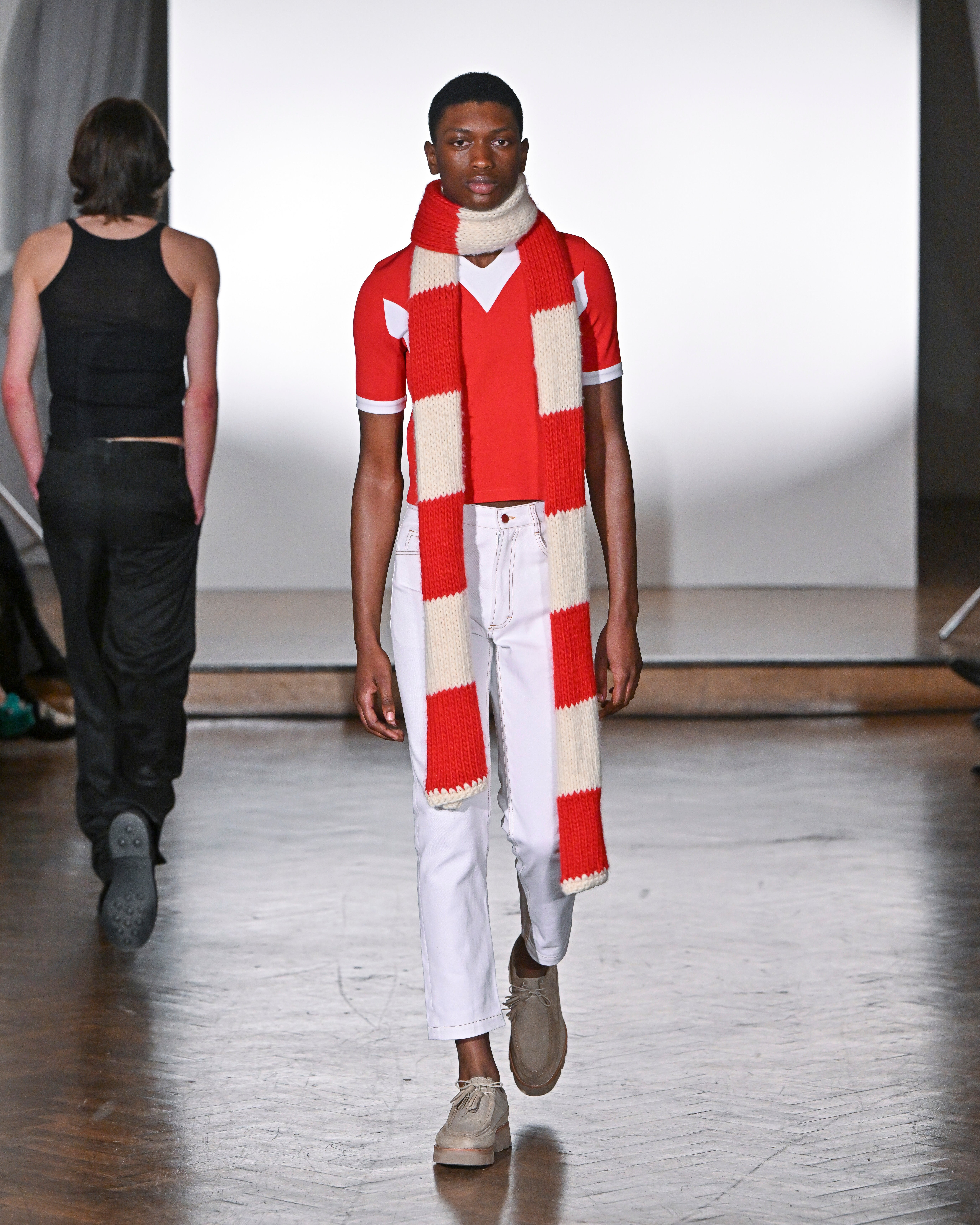
The line also saw Fletcher building on the patchworking process that has come to define his sustainable business model, with a denim two-piece made up of repurposed denim offcuts.
Meanwhile, there was also a commitment to honouring Britain’s manufacturing legacy, with Fletcher working alongside local seamstresses and tailors for autumn/winter 2022.
A series of headwear pieces came at the end. Inspired by The Rolling Stones’ 1973 Goats Head Soup album cover, silk organza swathes by Noel Stewart covered models’ entire faces as they walked the runway, nodding to the intrinsic subversive nature of Fletcher’s collection.
Speaking to The Independent, Fletcher explained why LFW stands out when it comes to supporting fledgling talents. “London has always lead the way in terms of pushing through what’s next,” he said.
“I studied menswear at Central Saint Martins, and that’s been the core of the business for the last few years, but it’s felt natural to move into and include womenswear in my collection.
“That being said, I don’t really think of it as menswear or womenswear but a collection of pieces that are ready for interpretation as my customers see fit.”
It’s this cocktail of creativity, innovation and environmentalism that unites London’s emerging designers today. Gone are the decadent, gratuitous fashion shows of yore, where industry gatekeepers inhibited change and fluidity out of fear.
In their place is a new wave of talented, eco-minded individuals, who are moving the needle in unexpected and socially conscious ways.
If this is the future of fashion, consider us fully on board.
Join our commenting forum
Join thought-provoking conversations, follow other Independent readers and see their replies
Comments